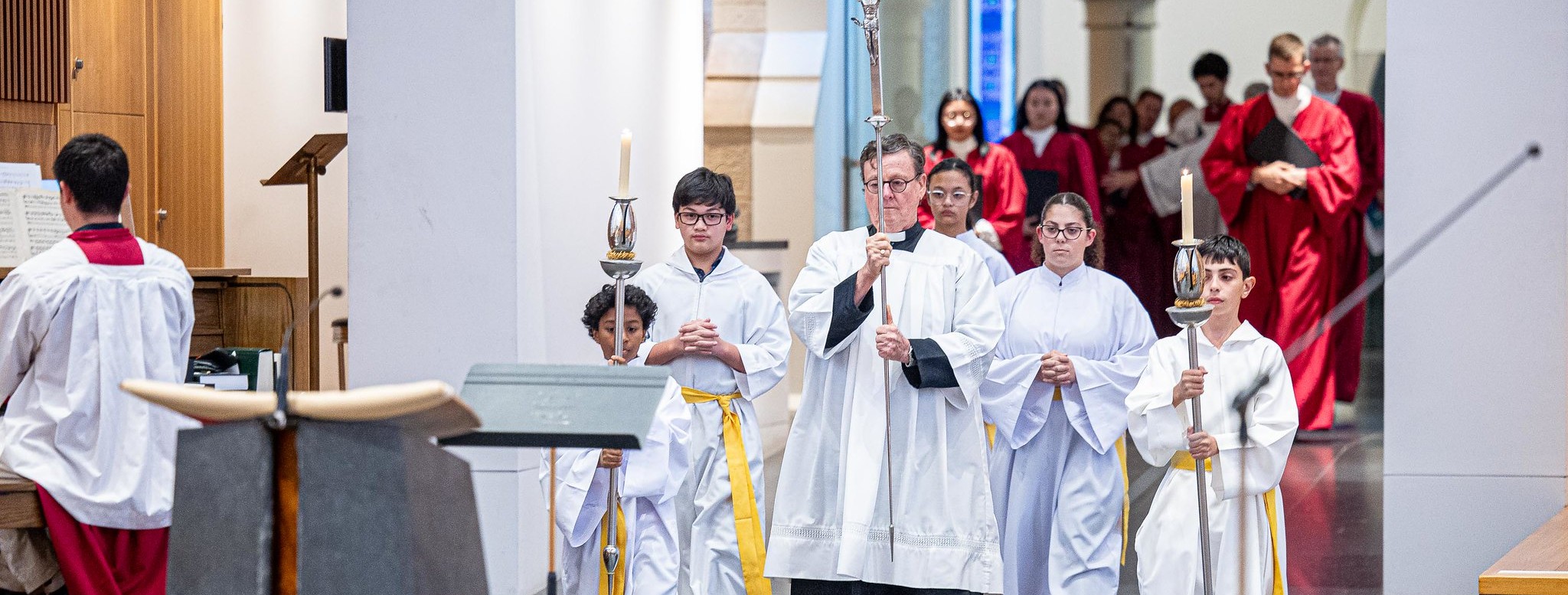Introductory Rites as Preparation for the Liturgy
National Liturgical Council

It is hard to pinpoint the moment Mass begins. Is it when parishioners leave home and set out for Mass? Is it when they are welcomed as they enter the church? Is it when everyone has taken up their place in the church? All these moments play their part in preparing for the celebration but the Mass proper begins with the entrance of the priest celebrant and other ministers, generally while the assembly sings a suitable hymn.
After the priest has reverenced the altar with a kiss (the altar being a symbol of Christ at the centre of the church), he makes the sign of the cross and greets everyone with one of the given formulae.
He may then say a few words to introduce the celebration of the day, before inviting everyone to acknowledge that they are sinners to whom God offers forgiveness. There are several forms of this penitential act, all brief. Part of it may be sung. This act of penitence makes it clear that only the mercy of God makes our prayer together possible.
Except during the seasons of Lent and Advent, the whole congregation then recites or sings the hymn of praise, “Glory to God in the highest,” otherwise known simply as the Gloria.
The final element of the introductory rites is the Collect. The priest calls us to pray in silence before “collecting” our prayer and voicing it aloud to God in our name.
While there are several different parts to the introductory rites they form a unit that has a single purpose: “to ensure that the faithful . . . establish communion and dispose themselves properly to listen to the Word of God and to celebrate the Eucharist worthily” (GIRM #46). In other words, they gather everyone together as one and prepare them for all that is to follow.
